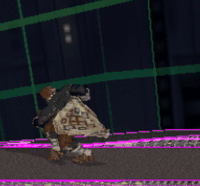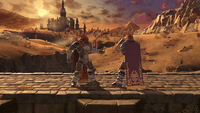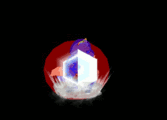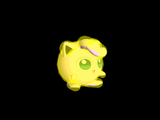Lag: Difference between revisions
(→Hitlag) |
Mariogeek2 (talk | contribs) m (→Normal landing: Melee Pichu has 2 frames of empty landing lag: https://smashboards.com/threads/ssbm-statistics-list.30064/) |
||
| (147 intermediate revisions by 78 users not shown) | |||
| Line 1: | Line 1: | ||
{{ArticleIcons|series=y}} | |||
{{for|other uses|Lag (disambiguation)}} | |||
'''Lag''' is a catch-all term used to indicate periods of time where a character is busy initiating or finishing a performed move, being left unable to perform any other action (except for moving through the air with aerial moves). The two main categories of lag that every move in the game has are '''startup lag''' and '''ending lag''', and for [[aerial]]s and certain [[special move]]s when used in the air, there's an additional form of ending lag that can occur called '''landing lag'''. The more lag a move has, the easier it is to evade the move and [[punish]] the user. Typically, powerful moves have more startup and/or endlag, though this is not always the case. Lag is usually measured in [[frame]]s, with one frame being the same length as 1/60th of a second (or 0.0166666667 seconds). The amount of startup lag, ending lag, landing lag, and active frames within a character's entire moveset is known as '''frame data'''. | |||
''' | |||
==Start-up lag== | |||
[[File:StartLag.gif|thumb|{{SSBM|Ganondorf}}'s [[up tilt]] has a significant amount of start-up lag in ''Melee'']] | |||
'''Start-up lag''', also known as just '''start-up''' and '''windup''', is the delay between a move being initiated and the move having an effect, such as the length of time before a [[hitbox]] is first produced. The fastest any move can come out is on frame 1 (1/60th of a second) and the more frames it takes for a move to come out, the longer its startup lag will be. Examples of moves with extreme start-up lag include [[Ganondorf]]'s [[Warlock Punch]] and [[King Dedede]]'s [[forward smash]]. Examples of moves with no start-up lag include [[Fox]]'s (in ''SSB'' and ''Melee'') and {{SSBM|Falco}}'s [[Reflector]] in ''Melee'' and [[Jigglypuff]]'s [[Rest]] in ''SSB'' and ''Melee''. [[Flinching]] during start-up will prevent the move from being executed, unless the move grants the character [[invincibility]]/[[intangibility]] or [[armor]]. | |||
The primary advantage of lower start-up lag is that the attack gives the opponent less reaction time, as well as the ability to hit before other attacks, giving the user greater flexibility in being able to land the attack (making such attacks all-around easier to land). Moves with lower startup lag can be used in a greater amount of situations, such as being a pressure escaping tool or as a [[punishment]] option. Moves with higher startup lag however cannot be used in nearly as many situations as the opponent can usually punish the attacker for simply throwing out the move before it can connect. Moves with very high startup lag are rarely used as a result, only being useful as a risky hard punish or as a [[shield break]] punish in most situations. While not always true, characters with fast frame data attacks tend to be more successful in competitive play than those with slow frame data attacks; part of the reason why characters such as [[Pikachu]], [[Fox]], [[Sheik]], and [[Meta Knight]] typically rank in the top or high tiers in ''Smash'' tier lists is that the general start-up lag of their attacks are among the fastest. Conversely, a major part of why characters such as [[Ganondorf]] are typically ranked as low tier characters is that the general start-up lag of their attacks are among the slowest. While low startup on attacks is certainly beneficial, it is not required if a character has a trait significant enough to make up for it. For example, {{SSBU|Shulk}} in ''Ultimate'' is commonly ranked as a high tier or top tier character despite having slow startup on almost all of his moves. To compensate, he possesses his [[Monado Arts]] which allow him to adapt to any situation, as well as outstanding [[range]] with some of the largest disjoints in the game, allowing him to attack from far enough away to be out of range for many characters to punish. | |||
<gallery widths="200px"> | |||
Ganondorf Neutral B SSBU.gif|Ganondorf's [[Warlock Punch]] has an extreme amount of start-up lag. | |||
Fox Down Special Hitbox Melee.gif|Fox's shine in ''Melee'' has no start-up lag, coming out immediately. | |||
</gallery> | |||
==Ending lag== | |||
'''Ending lag''', often officially referred to as '''vulnerability''' and also known as '''cool down''' and '''recovery''' in other fighting games, is the delay between a move's effect finishing and another action being available to begin, such as the length of time after an attack's hitboxes ceases before the character can move again. The vast majority of attacks have more ending lag than startup lag, though generally, attacks with lower start-up lag tend to have proportionally more ending lag and vice versa. Attacks such as [[Rest]], [[Ike]]'s [[forward smash]], and [[Mega Man]]'s [[up tilt]] are notorious for having an extreme amount of ending lag. Moves known for having especially low ending lag include {{SSBB|Meta Knight}}'s [[up aerial]] in ''Brawl'', [[Zero Suit Samus]]'s down smash, and [[Mr. Game & Watch]]'s [[up smash]]. Typically, an attack's ending lag can't be avoided, but some attacks can avoid ending lag without the character being flinched or [[priority|out-prioritised]], such as grabbing a [[ledge]] with a recovery move before it ends, and jump canceling Fox's and Falco's Reflector in ''Melee''. Additionally, aerials can avoid their ending lag by the character landing before completion; despite this inducing landing lag, it can be overall faster if the character lands soon enough and the attack's landing lag is low enough (a prominent example of this is Ike's [[neutral aerial]], which has a huge amount of ending lag, but rather low landing lag, thus landing earlier can be utilised to circumvent the attack's high ending lag). Also, if a character using a grounded normal attack becomes airborne before the attack finishes (such as from being pushed off by [[wind]] or the [[platform]] underneath them disappearing), the attack will abruptly end with the user free to move, thus avoiding the attack's ending lag (though [[special moves]] will continue if this occurs while using them). {{SSBU|Steve}} can exploit this quirk particularly well by building a [[Mine / Craft / Create Block|block]] and then using a ground move while standing atop it. When the block breaks, the move is instantly canceled, allowing Steve to immediately perform another action. | |||
The less ending lag an attack has, the less time an opponent has to [[punish]] it if it whiffs, and thus the safer it is to use. Attacks with low ending lag are also more effective at [[combo]]ing, as they allow a greater window for the attacker to attack again before the opponent can respond. An example of this in ''Smash 64'' can be seen with {{SSB|Kirby}} and {{SSB|Donkey Kong}}'s [[up tilt]]s. Both up tilts have the same startup lag but Kirby's has much less ending lag, which makes it drastically harder to punish as well as making it a much more effective combo tool compared to Donkey Kong's. While having attacks with low ending lag is considered important in competitive play and characters higher up on the [[tier list]] often tend to have low ending lag across their moveset, it isn't held in equal regard to start-up lag. [[Marth]], for example, is considered a top or high tier character in most ''Smash'' games, despite most of his attacks having high ending lag, whereas there are few highly-ranked characters or particularly effective moves in any of the games that have comparatively high start-up lag. Jigglypuff's [[Rest]] (especially in ''SSB'' and ''Melee'') is the epitome of this, as despite having the highest ending lag of any attack in the series, its almost instantaneous start-up lag (coupled with its extreme power) makes it one of Jigglypuff's best moves. Conversely, Ganondorf's up tilt in ''Melee'' and ''Brawl'' has comparable power with much lower ending lag, but its start-up lag is so ridiculously high that the move is almost impossible to land without the opponent being stunned from a shield break, in a position where they have no choice but to position themselves within its reach (such as attempting to [[recover]] or evade a stage hazard), or having already committed to an action that will put them in the attack's reach (i.e. Ganondorf successfully [[Mindgame#Read|reading]] his opponent), and thus it is almost never used in competitive play. The few moves that are very effective in spite of high start-up lag often have a combination of significant attributes besides proportionally low ending lag. {{SSBB|Lucario}}'s forward smash in ''Brawl'', for instance, is considered to be one of the best forward smashes in the game despite being one of the slowest in start-up, as the move not only has very low ending lag, but also has potentially extreme power when at high [[Aura]] and disjointed reach, making it one of the few powerful KO moves that can often be used at ranges at which it is unpunishable. | |||
<gallery widths="200px"> | |||
Jigglypuff Down Special Hitbox Melee.gif|Jigglypuff's Rest has extreme ending lag, leaving it wide open for a punish. | |||
</gallery> | |||
== | ==Landing lag== | ||
'''Landing lag''' is the lag incurred when an airborne character lands on the ground for any reason. The amount of lag depends on what action the character is performing upon landing. | |||
In | ===Normal landing=== | ||
When landing under normal circumstances, characters undergo either a "light landing" (also known as a "no-impact land") or a "heavy landing". In ''Melee'', there was only one type of normal landing animation so most characters have a 4 frame landing animation, regardless of how fast they are falling (which a few exceptions). Light landings incur only 2 frames of lag (4 frames in ''Smash 64''), whereas heavy landings are character-specific (after ''Smash 64'' where all heavy landings had 8 frames of landing lag), ranging from 2 to 6. The type of landing that occurs is based on the character's downwards speed upon landing. In ''Smash 64'', the difference between a light and hard landing was as simple as whether the player was either falling normally or [[fast fall]]ing. Starting from ''Brawl'' however, a heavy landing occurs once a player has been falling at their maximum falling speed for a set amount of time (the amount of time is character dependent), so landing during the apex of a jump or on an upwards-moving platform tends to be faster than landing from a fastfall or on a downwards-moving platform. | |||
== | ===Aerial landing=== | ||
[[File:Punishment Snake F-air Lag KO Brawl.gif|thumb|250px|An example of landing lag, in which an improperly timed aerial attack with noticeable amount of landing lag (such as {{SSBB|Snake}}'s [[forward aerial]]) can lead to getting [[punishment|punished]].]] | |||
[[File:Lcancelink.gif|thumb|Another example of landing lag, along with the effect of [[L-cancelling]] in ''Melee''. The red Link L-cancels, and can input his shield in half the time of the green Link.]] | |||
If a character lands while in the middle of an [[aerial attack]], they go through a unique animation that lasts for significantly longer than a normal landing. This animation is not automatically determined. The game has to call for a flag which starts on a pre determined frame in order for the aerial landing lag animation to occur. Any time a character lands while this flag is not activated, they will enter their normal landing animation (this is known as an [[auto-cancel]]). A clear example of an aerial landing animation can be seen with [[Link]]'s [[down aerial]]; hitting the ground during the attack results in Link's sword getting stuck, and he has to spend a significant amount of time pulling it out before he can do anything else (especially prior to ''Smash 4''). Each aerial attack has its own amount of landing lag. Naturally, the less landing lag, the better; for the same reasons as why less ending lag is beneficial. Most [[special move]]s tend to continue execution instead of being interrupted when the user lands while using them, though a few undergo their own unique landing animation if the character lands after initiating them in the air, such as [[Falcon Kick]] and [[Wizard's Foot]] and some such as Fox's lasers prior to ''Smash 4'' will even make the character enter their normal landing animation. | |||
Certain aerial attacks produce a hitbox during their landing lag, such as Kirby's down aerial. | |||
In Smash 64, not all aerial attacks have unique landing animations, though they still have unique lag durations. | |||
There are ways to circumvent landing lag. In ''Smash 64'' and ''Melee'', a technique called [[L-cancelling]] (more commonly known as Z-cancelling in ''Smash 64'') can be used to reduce landing lag. Pressing shield just before landing will reduce the amount of landing lag an aerial has. In ''Smash 64'', this will make the character enter their normal landing animation although in ''Melee'', it plays the same landing animation but only at double the speed (effectively halving the landing lag). Because of this, the technique is more effective in ''Smash 64'' although it is still a vital technique in both games, making aerials safer when landing and increasing their followup potential. In all games, an aerial's landing lag can avoided by landing during the time they can auto-cancel. Each aerial has a different auto-cancel window and the more time an aerial can auto-cancel, the easier and more beneficial/practical it is to auto-cancel. Aerials with higher landing lag especially benefit from these techniques . | |||
[[ | ''Smash 4''{{'}}s air dodges have their own aerial landing lag, being universally 21 frames for all characters. When landing one frame before the end of an aerial or air dodge's animation, aerial landings can be completely cancelled into [[special move]]s, such as after {{SSB4|Ganondorf}}'s forward aerial from the start of a full hop (as Ganondorf is in the air for 44 frames during his full hop and his forward aerial's [[interruptibility|first actionable frame]] is on frame 45). ''Ultimate'''s air dodges have 10 frames of landing lag when a normal air dodge is performed and 19 frames when a directional air dodge is performed. | ||
[[Category: | |||
===Special landing=== | |||
Characters that land while in their [[helpless]] state undergo a specific amount of landing lag, dependent on the move that initiated it. While the state is known as "LandingFallSpecial" or similar in the games' code, it also applies to air dodges, and thus [[wavedash]]es, in ''Melee'' (with air dodges having 10 frames of landing lag in ''Melee''). | |||
===[[Bayonetta Recovery Frames]]=== | |||
[[Bayonetta]]'s landing lag gets higher depending on how many [[special move]]s she used before landing. This applies to both the normal landing lag and the landing lag from [[aerial attack]]s. These are known as [[Bayonetta_recovery_frames|her recovery frames]]. | |||
[[Category:Game physics]] | |||
Latest revision as of 21:19, November 20, 2024
Lag is a catch-all term used to indicate periods of time where a character is busy initiating or finishing a performed move, being left unable to perform any other action (except for moving through the air with aerial moves). The two main categories of lag that every move in the game has are startup lag and ending lag, and for aerials and certain special moves when used in the air, there's an additional form of ending lag that can occur called landing lag. The more lag a move has, the easier it is to evade the move and punish the user. Typically, powerful moves have more startup and/or endlag, though this is not always the case. Lag is usually measured in frames, with one frame being the same length as 1/60th of a second (or 0.0166666667 seconds). The amount of startup lag, ending lag, landing lag, and active frames within a character's entire moveset is known as frame data.
Start-up lag[edit]
Start-up lag, also known as just start-up and windup, is the delay between a move being initiated and the move having an effect, such as the length of time before a hitbox is first produced. The fastest any move can come out is on frame 1 (1/60th of a second) and the more frames it takes for a move to come out, the longer its startup lag will be. Examples of moves with extreme start-up lag include Ganondorf's Warlock Punch and King Dedede's forward smash. Examples of moves with no start-up lag include Fox's (in SSB and Melee) and Falco's Reflector in Melee and Jigglypuff's Rest in SSB and Melee. Flinching during start-up will prevent the move from being executed, unless the move grants the character invincibility/intangibility or armor.
The primary advantage of lower start-up lag is that the attack gives the opponent less reaction time, as well as the ability to hit before other attacks, giving the user greater flexibility in being able to land the attack (making such attacks all-around easier to land). Moves with lower startup lag can be used in a greater amount of situations, such as being a pressure escaping tool or as a punishment option. Moves with higher startup lag however cannot be used in nearly as many situations as the opponent can usually punish the attacker for simply throwing out the move before it can connect. Moves with very high startup lag are rarely used as a result, only being useful as a risky hard punish or as a shield break punish in most situations. While not always true, characters with fast frame data attacks tend to be more successful in competitive play than those with slow frame data attacks; part of the reason why characters such as Pikachu, Fox, Sheik, and Meta Knight typically rank in the top or high tiers in Smash tier lists is that the general start-up lag of their attacks are among the fastest. Conversely, a major part of why characters such as Ganondorf are typically ranked as low tier characters is that the general start-up lag of their attacks are among the slowest. While low startup on attacks is certainly beneficial, it is not required if a character has a trait significant enough to make up for it. For example, Shulk in Ultimate is commonly ranked as a high tier or top tier character despite having slow startup on almost all of his moves. To compensate, he possesses his Monado Arts which allow him to adapt to any situation, as well as outstanding range with some of the largest disjoints in the game, allowing him to attack from far enough away to be out of range for many characters to punish.
Ganondorf's Warlock Punch has an extreme amount of start-up lag.
Ending lag[edit]
Ending lag, often officially referred to as vulnerability and also known as cool down and recovery in other fighting games, is the delay between a move's effect finishing and another action being available to begin, such as the length of time after an attack's hitboxes ceases before the character can move again. The vast majority of attacks have more ending lag than startup lag, though generally, attacks with lower start-up lag tend to have proportionally more ending lag and vice versa. Attacks such as Rest, Ike's forward smash, and Mega Man's up tilt are notorious for having an extreme amount of ending lag. Moves known for having especially low ending lag include Meta Knight's up aerial in Brawl, Zero Suit Samus's down smash, and Mr. Game & Watch's up smash. Typically, an attack's ending lag can't be avoided, but some attacks can avoid ending lag without the character being flinched or out-prioritised, such as grabbing a ledge with a recovery move before it ends, and jump canceling Fox's and Falco's Reflector in Melee. Additionally, aerials can avoid their ending lag by the character landing before completion; despite this inducing landing lag, it can be overall faster if the character lands soon enough and the attack's landing lag is low enough (a prominent example of this is Ike's neutral aerial, which has a huge amount of ending lag, but rather low landing lag, thus landing earlier can be utilised to circumvent the attack's high ending lag). Also, if a character using a grounded normal attack becomes airborne before the attack finishes (such as from being pushed off by wind or the platform underneath them disappearing), the attack will abruptly end with the user free to move, thus avoiding the attack's ending lag (though special moves will continue if this occurs while using them). Steve can exploit this quirk particularly well by building a block and then using a ground move while standing atop it. When the block breaks, the move is instantly canceled, allowing Steve to immediately perform another action.
The less ending lag an attack has, the less time an opponent has to punish it if it whiffs, and thus the safer it is to use. Attacks with low ending lag are also more effective at comboing, as they allow a greater window for the attacker to attack again before the opponent can respond. An example of this in Smash 64 can be seen with Kirby and Donkey Kong's up tilts. Both up tilts have the same startup lag but Kirby's has much less ending lag, which makes it drastically harder to punish as well as making it a much more effective combo tool compared to Donkey Kong's. While having attacks with low ending lag is considered important in competitive play and characters higher up on the tier list often tend to have low ending lag across their moveset, it isn't held in equal regard to start-up lag. Marth, for example, is considered a top or high tier character in most Smash games, despite most of his attacks having high ending lag, whereas there are few highly-ranked characters or particularly effective moves in any of the games that have comparatively high start-up lag. Jigglypuff's Rest (especially in SSB and Melee) is the epitome of this, as despite having the highest ending lag of any attack in the series, its almost instantaneous start-up lag (coupled with its extreme power) makes it one of Jigglypuff's best moves. Conversely, Ganondorf's up tilt in Melee and Brawl has comparable power with much lower ending lag, but its start-up lag is so ridiculously high that the move is almost impossible to land without the opponent being stunned from a shield break, in a position where they have no choice but to position themselves within its reach (such as attempting to recover or evade a stage hazard), or having already committed to an action that will put them in the attack's reach (i.e. Ganondorf successfully reading his opponent), and thus it is almost never used in competitive play. The few moves that are very effective in spite of high start-up lag often have a combination of significant attributes besides proportionally low ending lag. Lucario's forward smash in Brawl, for instance, is considered to be one of the best forward smashes in the game despite being one of the slowest in start-up, as the move not only has very low ending lag, but also has potentially extreme power when at high Aura and disjointed reach, making it one of the few powerful KO moves that can often be used at ranges at which it is unpunishable.
Landing lag[edit]
Landing lag is the lag incurred when an airborne character lands on the ground for any reason. The amount of lag depends on what action the character is performing upon landing.
Normal landing[edit]
When landing under normal circumstances, characters undergo either a "light landing" (also known as a "no-impact land") or a "heavy landing". In Melee, there was only one type of normal landing animation so most characters have a 4 frame landing animation, regardless of how fast they are falling (which a few exceptions). Light landings incur only 2 frames of lag (4 frames in Smash 64), whereas heavy landings are character-specific (after Smash 64 where all heavy landings had 8 frames of landing lag), ranging from 2 to 6. The type of landing that occurs is based on the character's downwards speed upon landing. In Smash 64, the difference between a light and hard landing was as simple as whether the player was either falling normally or fast falling. Starting from Brawl however, a heavy landing occurs once a player has been falling at their maximum falling speed for a set amount of time (the amount of time is character dependent), so landing during the apex of a jump or on an upwards-moving platform tends to be faster than landing from a fastfall or on a downwards-moving platform.
Aerial landing[edit]
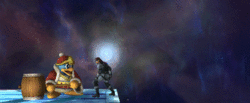
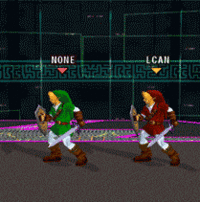
If a character lands while in the middle of an aerial attack, they go through a unique animation that lasts for significantly longer than a normal landing. This animation is not automatically determined. The game has to call for a flag which starts on a pre determined frame in order for the aerial landing lag animation to occur. Any time a character lands while this flag is not activated, they will enter their normal landing animation (this is known as an auto-cancel). A clear example of an aerial landing animation can be seen with Link's down aerial; hitting the ground during the attack results in Link's sword getting stuck, and he has to spend a significant amount of time pulling it out before he can do anything else (especially prior to Smash 4). Each aerial attack has its own amount of landing lag. Naturally, the less landing lag, the better; for the same reasons as why less ending lag is beneficial. Most special moves tend to continue execution instead of being interrupted when the user lands while using them, though a few undergo their own unique landing animation if the character lands after initiating them in the air, such as Falcon Kick and Wizard's Foot and some such as Fox's lasers prior to Smash 4 will even make the character enter their normal landing animation.
Certain aerial attacks produce a hitbox during their landing lag, such as Kirby's down aerial.
In Smash 64, not all aerial attacks have unique landing animations, though they still have unique lag durations.
There are ways to circumvent landing lag. In Smash 64 and Melee, a technique called L-cancelling (more commonly known as Z-cancelling in Smash 64) can be used to reduce landing lag. Pressing shield just before landing will reduce the amount of landing lag an aerial has. In Smash 64, this will make the character enter their normal landing animation although in Melee, it plays the same landing animation but only at double the speed (effectively halving the landing lag). Because of this, the technique is more effective in Smash 64 although it is still a vital technique in both games, making aerials safer when landing and increasing their followup potential. In all games, an aerial's landing lag can avoided by landing during the time they can auto-cancel. Each aerial has a different auto-cancel window and the more time an aerial can auto-cancel, the easier and more beneficial/practical it is to auto-cancel. Aerials with higher landing lag especially benefit from these techniques .
Smash 4's air dodges have their own aerial landing lag, being universally 21 frames for all characters. When landing one frame before the end of an aerial or air dodge's animation, aerial landings can be completely cancelled into special moves, such as after Ganondorf's forward aerial from the start of a full hop (as Ganondorf is in the air for 44 frames during his full hop and his forward aerial's first actionable frame is on frame 45). Ultimate's air dodges have 10 frames of landing lag when a normal air dodge is performed and 19 frames when a directional air dodge is performed.
Special landing[edit]
Characters that land while in their helpless state undergo a specific amount of landing lag, dependent on the move that initiated it. While the state is known as "LandingFallSpecial" or similar in the games' code, it also applies to air dodges, and thus wavedashes, in Melee (with air dodges having 10 frames of landing lag in Melee).
Bayonetta Recovery Frames[edit]
Bayonetta's landing lag gets higher depending on how many special moves she used before landing. This applies to both the normal landing lag and the landing lag from aerial attacks. These are known as her recovery frames.
